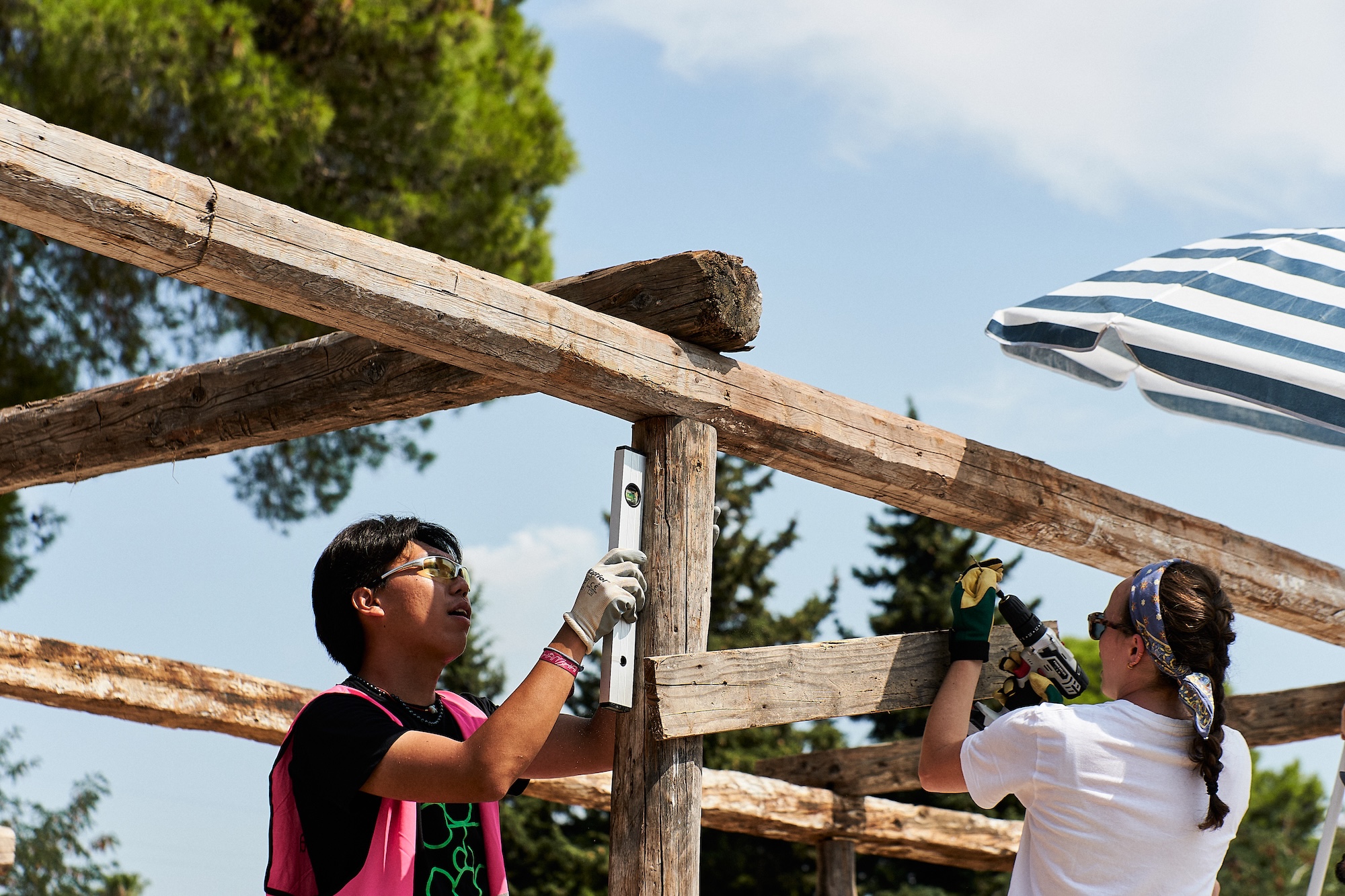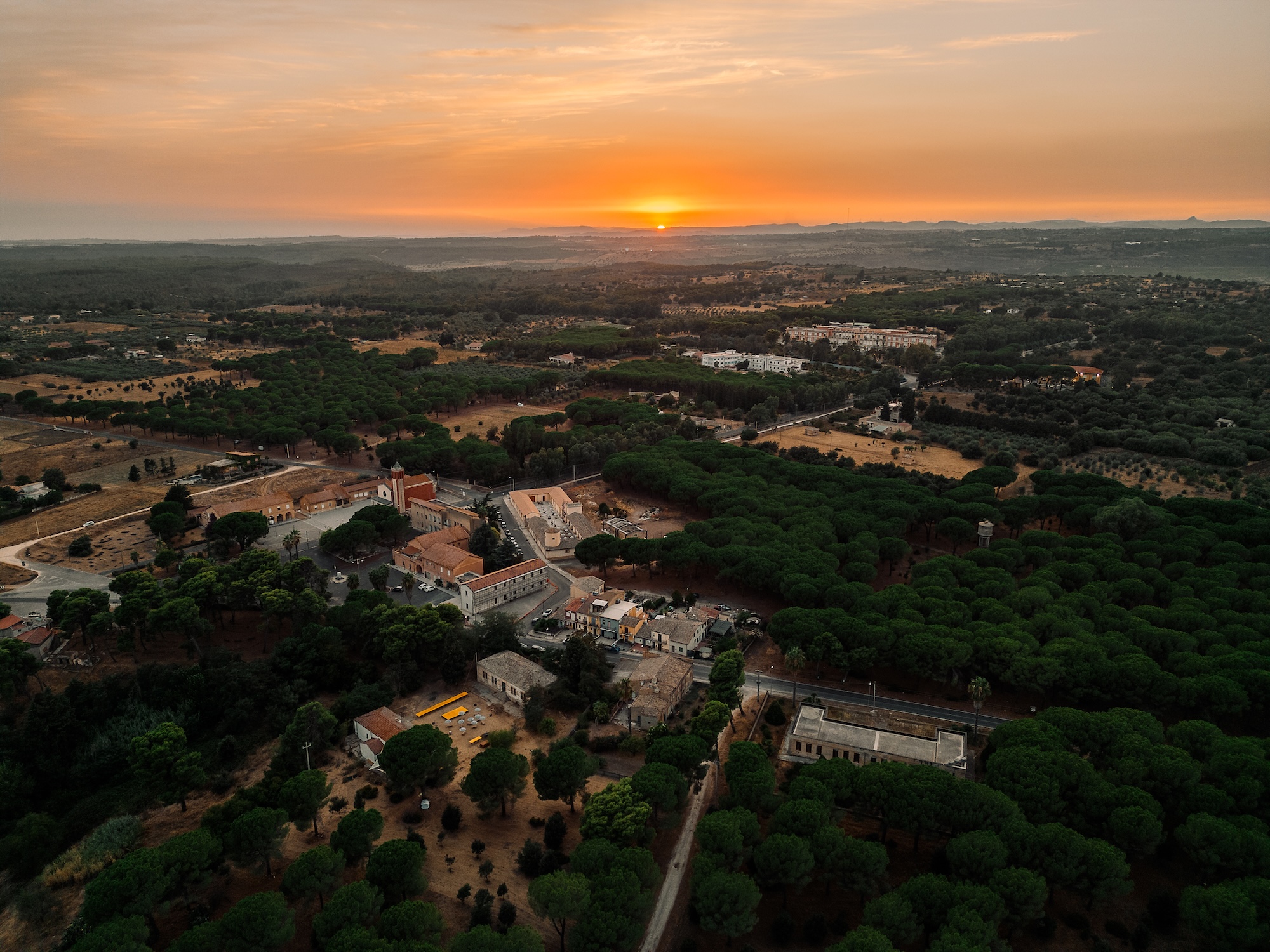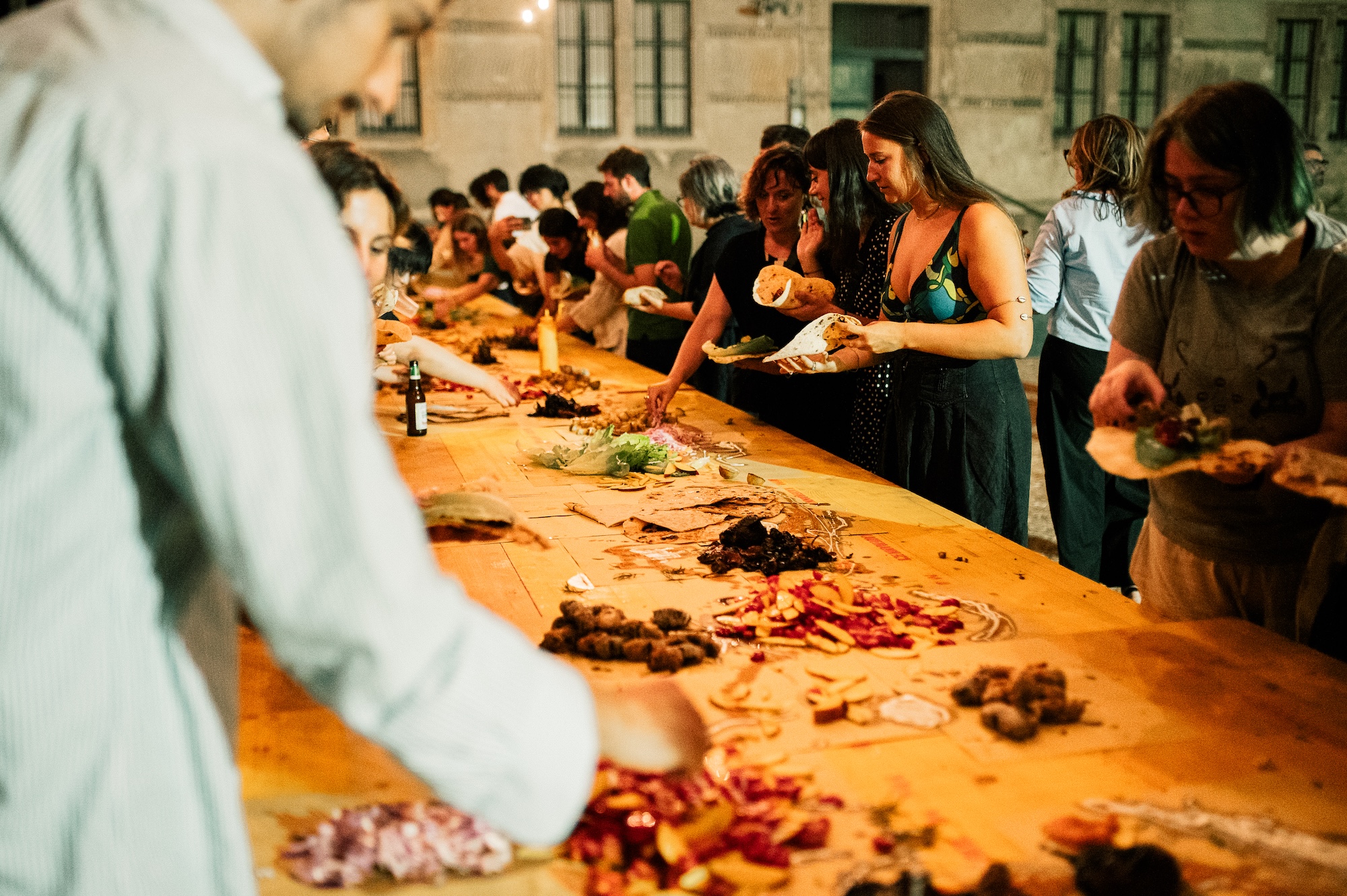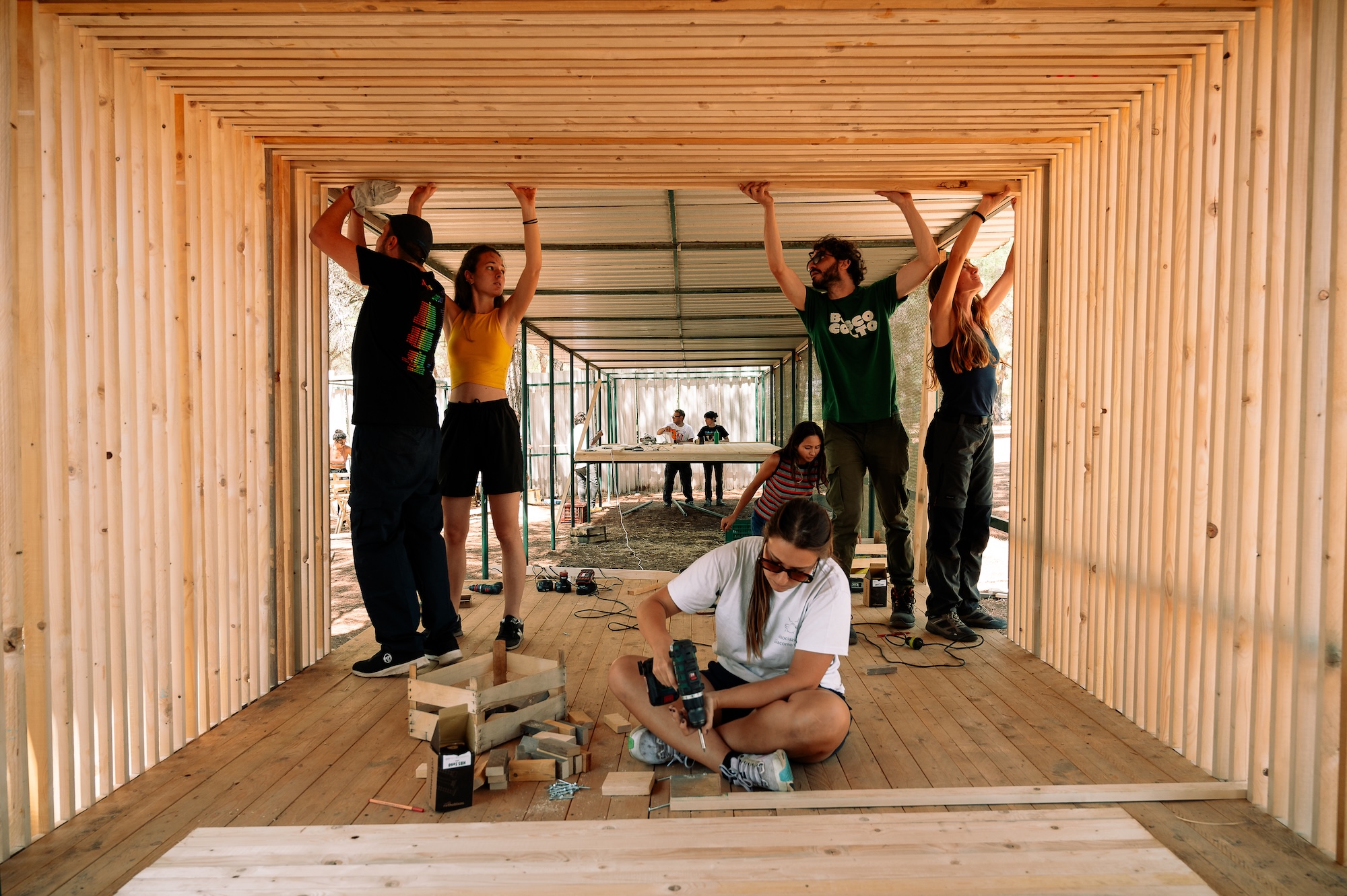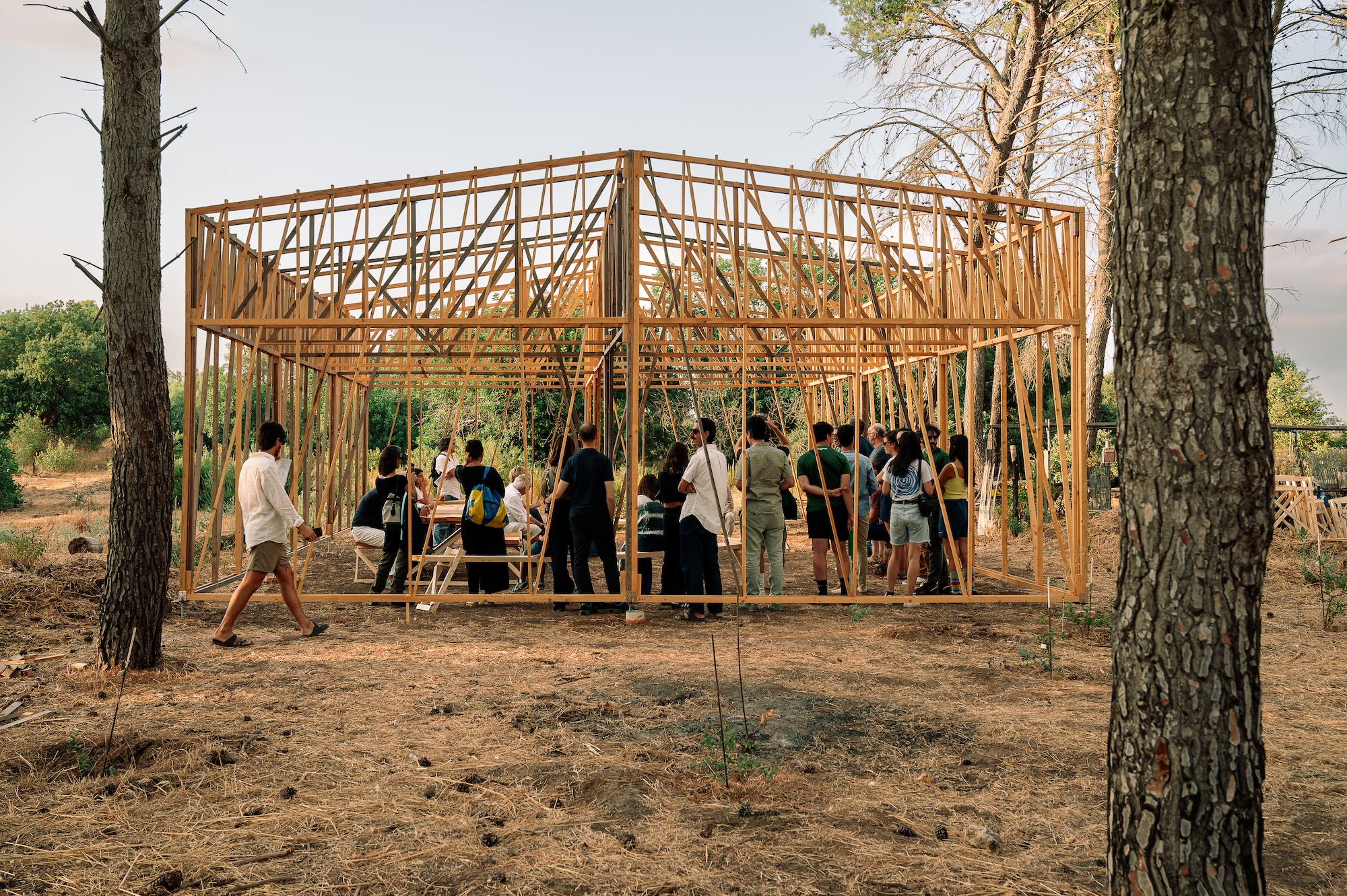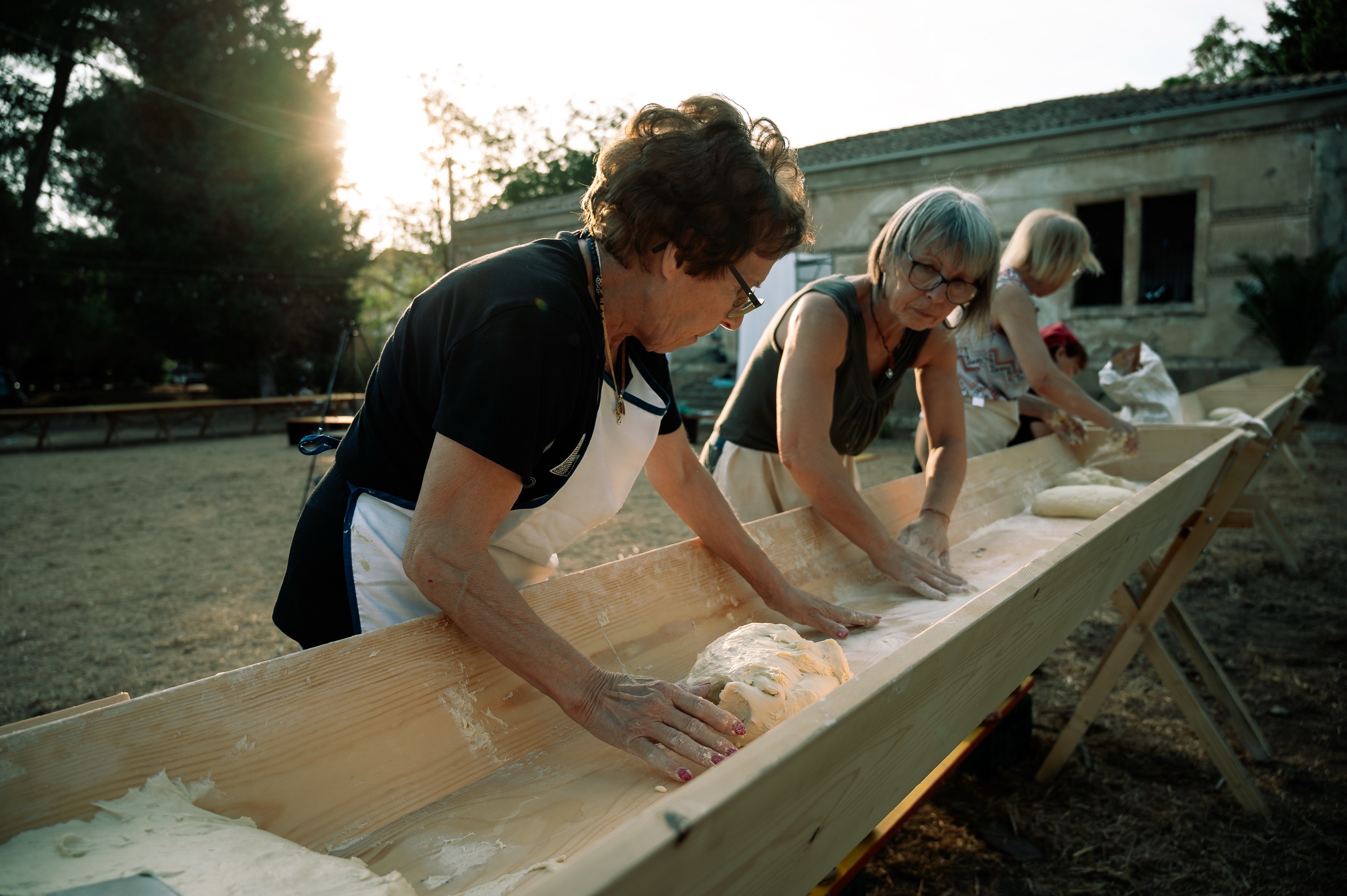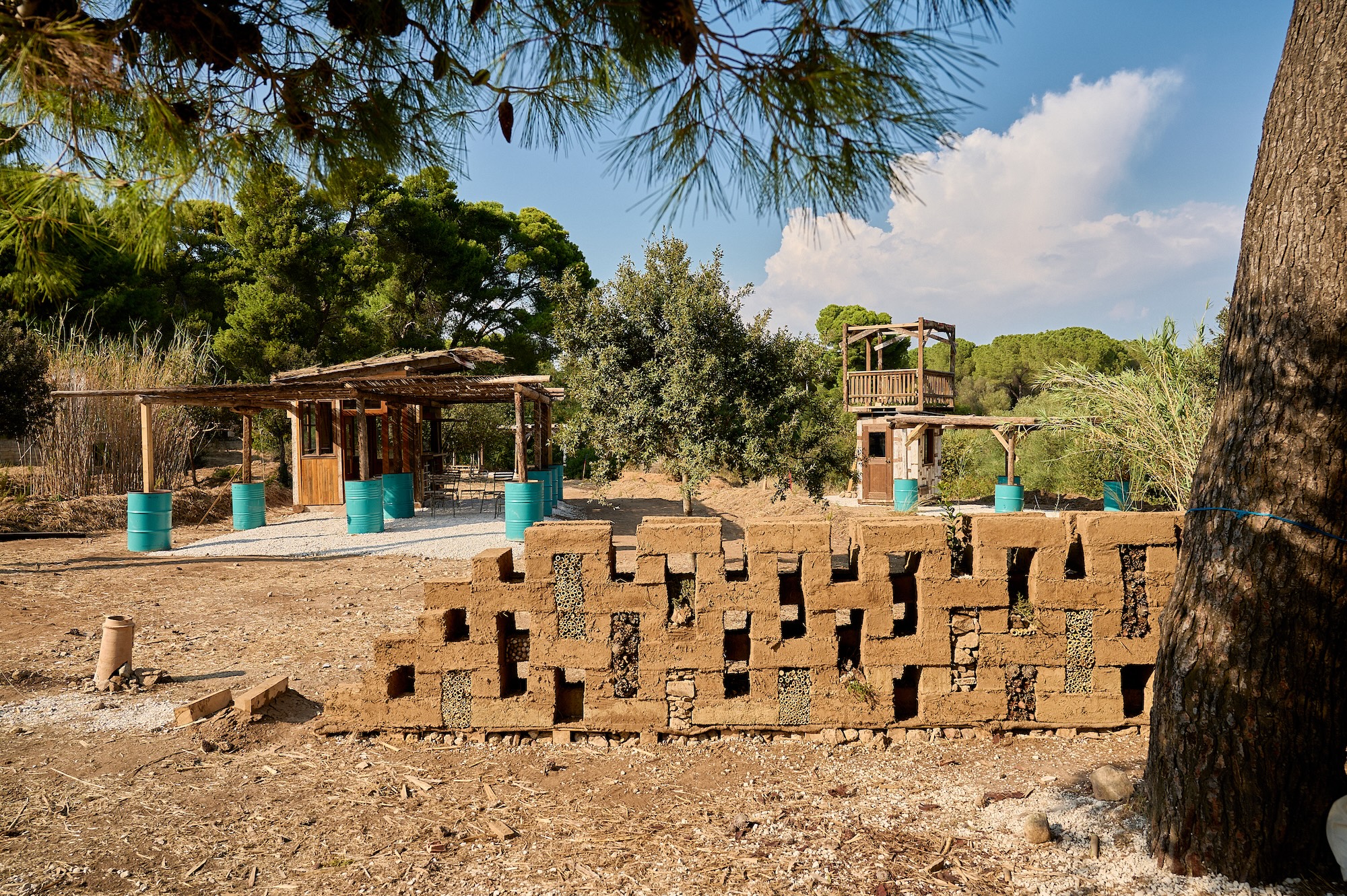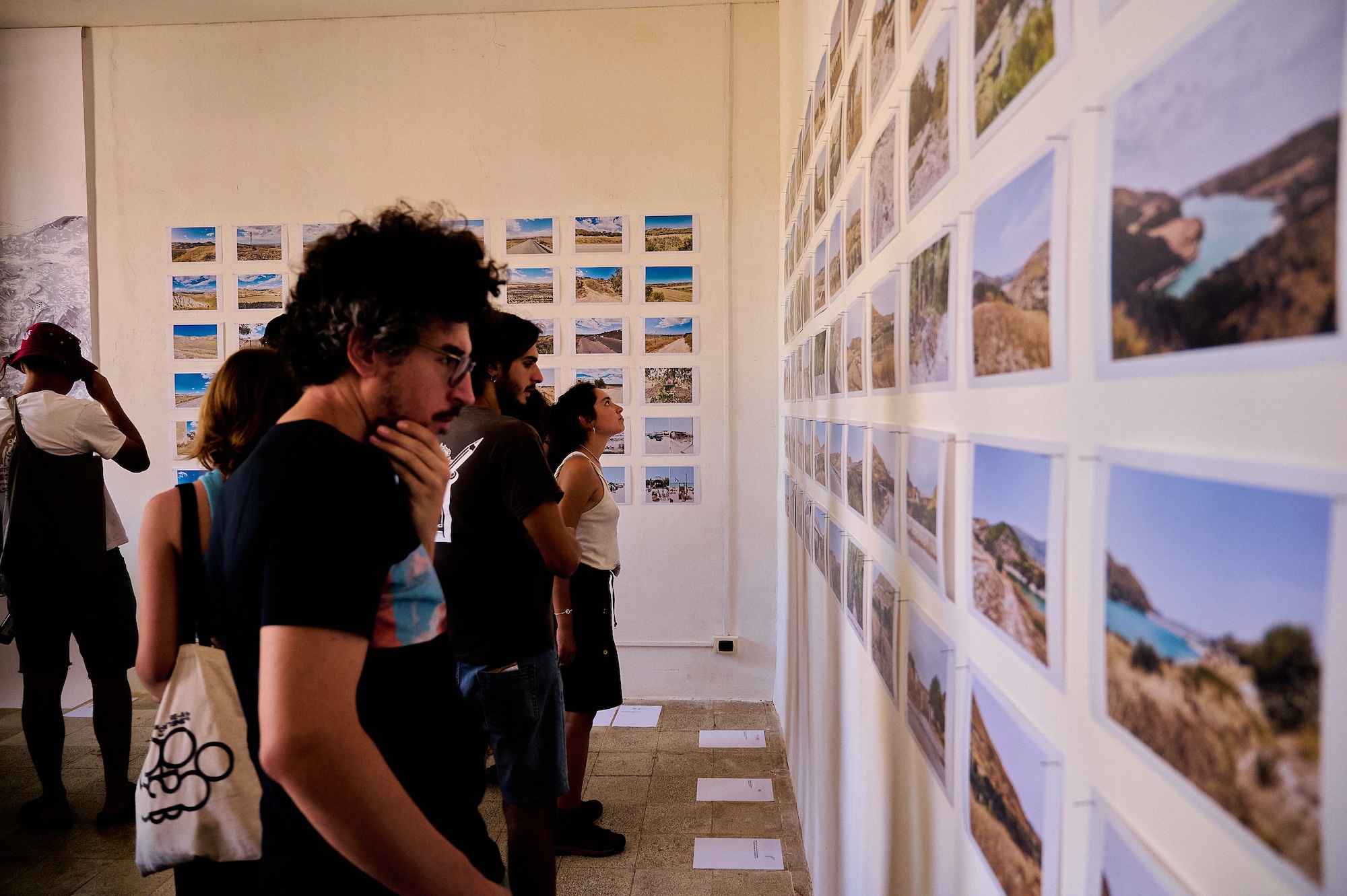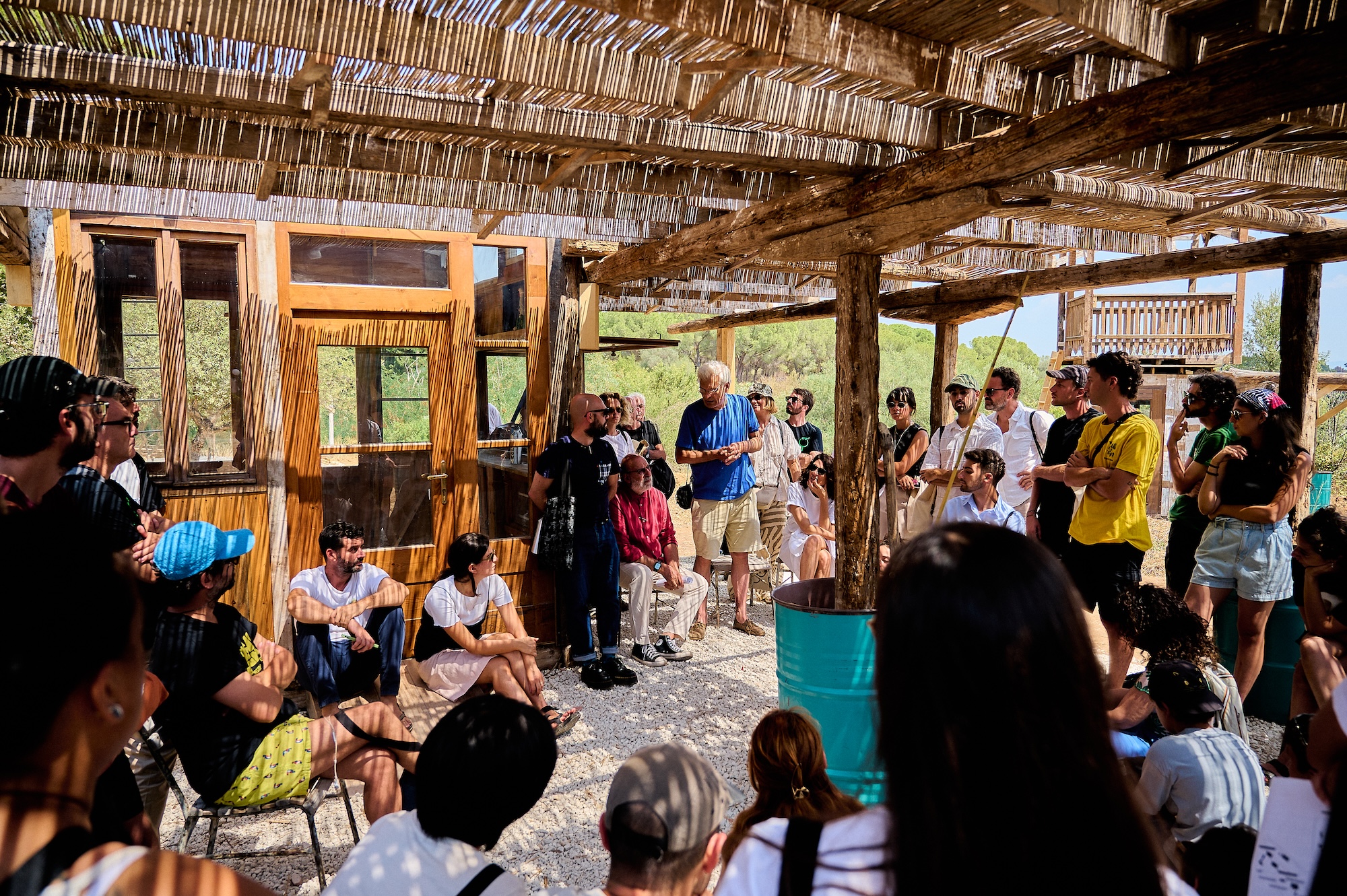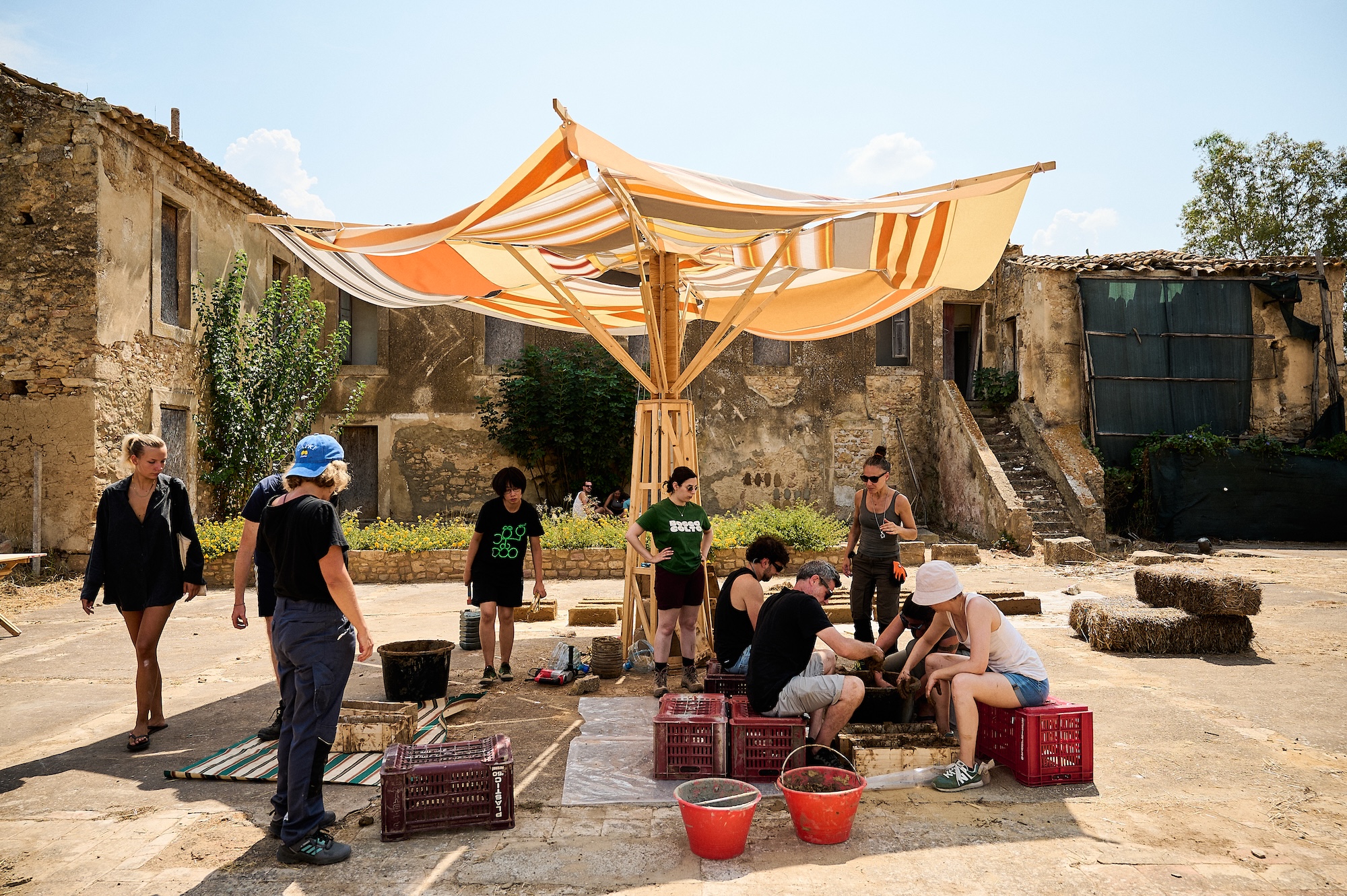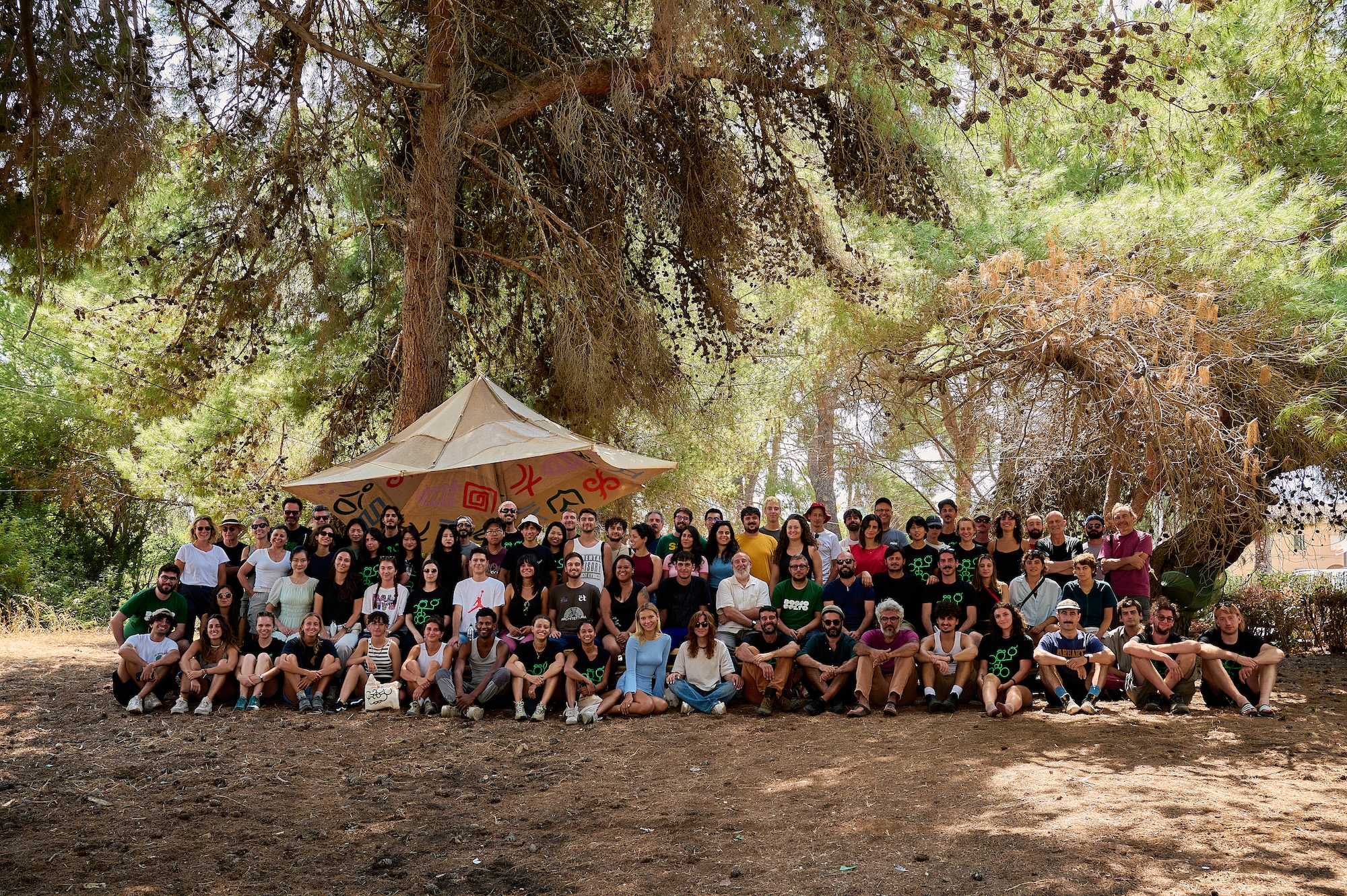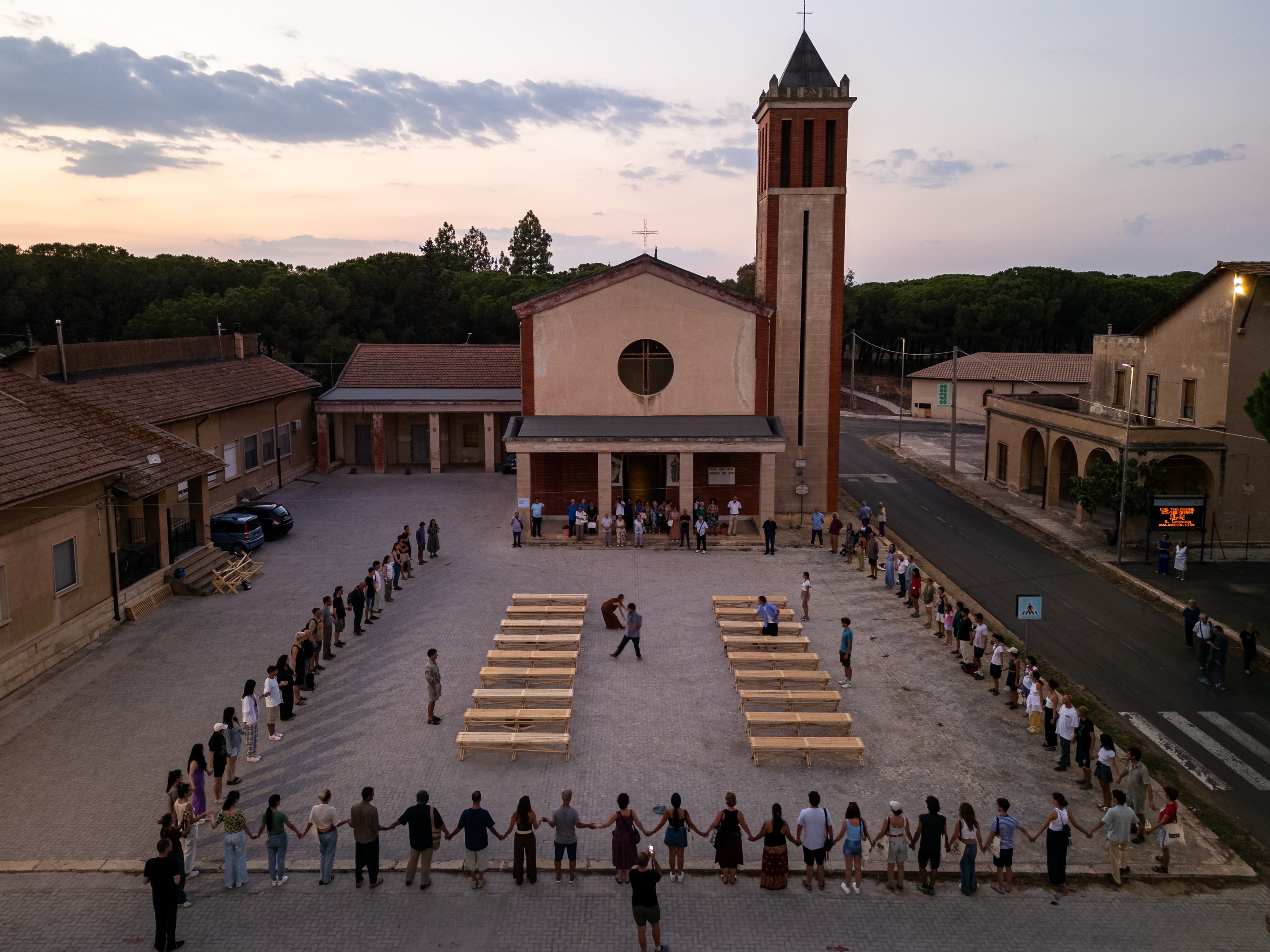Reconnecting with nature
BOSCO COLTO
BOSCO COLTO - Rimboschimenti Co(cu)lturali
Makramè’s most emblematic project, Bosco Colto, is a ten-day experimental campus in Borgo di Santo Pietro, Caltagirone, Sicily. Bringing together art, architecture, literature, gastronomy, eco-design, and permaculture, it serves as a hub for sustainability, innovation, and cultural regeneration. Through creative exchange and territorial revitalization, Bosco Colto fosters new models of coexistence between humans and nature.
Italy
Local
Caltagirone
It addresses urban-rural linkages
It refers to other types of transformations (soft investment)
Yes
2024-08-31
No
No
No
As a representative of an organisation
Bosco Colto Campus is a 10-day immersive workshop in the forest, blending art, architecture, design, photography, and communication to create spaces for education and co-creation. Rooted in Reconnecting with Nature, it promotes an integrated, sustainable territorial vision, transcending disciplinary boundaries. Addressed to students and young professionals in artistic and design fields, it collaborates with the University of Catania, SDS Architettura Siracusa, the Municipality of Caltagirone, the Sicilian Region, and other institutions, involving citizens and local communities. Key partners include Nave Argo, Associazione Architetti del Calatino, Extopia, Geloi, Legambiente Il Cigno, Il Ramarro, Casa Rosetta Onlus, Santo Pietro, Bosco e Museo Vivo, Cooperativa Terra Nostra, Comitato Giada, and the Stazione Sperimentale di Granicoltura. Numerous local enterprises—Azienda Agricola Caudarella, Molino Crisafulli, Bio Gold, La Reginella, Tomarchio, Selvatica Lab, Allevabio, Le Galline Felici, Vitalcork, and others—have joined the initiative, reinforcing as well a sense of belonging and rediscovering the region’s heritage. The inaugural edition 2022, Rasoterra, explored resonance with the things of the world through evolving micro-architectures shaped by horizontal dialogue. In 2023, the Post-Occupancy phase investigated new forms of temporary living and primal materials. The 2024 edition, Re-Assemblage, integrated histories, materials, organisms, and cultures, experimenting with nomadic micro-spaces and slow presence in critical landscapes. Over a three-year cycle: 120+ participants, 53 tutors, and visiting experts from 10 countries have contributed to 22 public events, 24 workshops, 9 micro-architectures, 6 reactivated sites, and 3 regenerated spaces, with 2,000+ attendees. Inspired by Haraway’s thought, the Campus blends elemental techniques, humble materials, and innovative technological integrations, transforming urban areas into vibrant, inclusive creative hubs.
Multispecies
Transdisciplinarity
Nature/Culture
Regeneration
Community
Our project embodies the values of the New European Bauhaus, integrating local materials, reuse practices, and zero-impact construction techniques. It offers a scalable model for territorial regeneration, fostering civic engagement and collaboration among local actors to create resilient support networks. Through bio-architecture solutions—using renewable materials such as cork, raw earth bricks, and industrial by-products—it transforms open spaces into hubs for social interaction, merging public art with sustainable architecture. The Campus installations are designed with a zero-waste approach, serving as a benchmark for sustainable interventions in protected areas. A prime example was the pavilion assembled for the 2024 edition of Bosco Colto Campus, dedicated to Re Assemblage. On that occasion, the Vatican’s pavilion Social Friendship: Gathering in the Garden, originally built for the 2023 Venice Biennale and destined for disposal, was transported to Sicily and reassembled, gaining a second life. This action embodies environmental, economic, and social sustainability, aligning with Laudato si’, where caring for our common home is inseparable from addressing social inequalities. The project prioritizes circular economy principles by extending material life cycles and reducing environmental impact. Waste management is central: during the Campus, sustainable practices—reusable tableware, organic waste composting, and meticulous recycling—ensure responsible consumption and minimize waste. Lastly, the project defines an innovative model of transformative tourism, shifting from consumerism to personal growth, intercultural exchange, and sustainable engagement. Sicily’s cultural and natural heritage provides the ideal setting to experience the land authentically, fostering active participation in social and environmental regeneration. Bosco Colto thus stands as a model for ecological and cultural transition, blending landscape preservation.
The project aims to create spaces that seamlessly integrate into the landscape, enhancing the relationship between the natural and built environments. Through the synergistic collaboration of tutors, architects, and designers, we have developed site-specific solutions that respect the forest’s identity, balancing innovation and tradition to provide spaces for gathering, reflection, and exchange. The design process translates into a contemporary, hands-on educational experience, promoting environmental sustainability through a green and circular approach. Primarily targeting students and young professionals, the initiative fosters interaction with experts and educators often excluded from institutional training programs.
A meticulous attention to detail has shaped environments that stimulate creativity and well-being, demonstrating how the fusion of art, architecture, and nature enriches both human experience and the surrounding territory. Through workshops, hands-on experiences, and collective design sessions, the project unfolds as an open-air laboratory where art, craftsmanship, and sustainable architecture converge in a shared creative act with nature. Space design incorporates biophilic principles, enhancing psychological and physiological well-being while strengthening the bond between humans and the environment.
The concept of temporary learning spaces, inspired by nomadic architectural models and adaptive projects, enables a fluid use of space, where aesthetics and functionality respond to community needs and environmental conditions. Each element—natural or built—becomes part of a living narrative: materials, shapes, and textures amplify the perception of place, fostering a multisensory engagement. Adopting a holistic approach, Bosco Colto establishes a new paradigm of sustainable and participatory design, where aesthetics serve not merely as decoration but as a catalyst for interaction, learning, and cultural regeneration.
A meticulous attention to detail has shaped environments that stimulate creativity and well-being, demonstrating how the fusion of art, architecture, and nature enriches both human experience and the surrounding territory. Through workshops, hands-on experiences, and collective design sessions, the project unfolds as an open-air laboratory where art, craftsmanship, and sustainable architecture converge in a shared creative act with nature. Space design incorporates biophilic principles, enhancing psychological and physiological well-being while strengthening the bond between humans and the environment.
The concept of temporary learning spaces, inspired by nomadic architectural models and adaptive projects, enables a fluid use of space, where aesthetics and functionality respond to community needs and environmental conditions. Each element—natural or built—becomes part of a living narrative: materials, shapes, and textures amplify the perception of place, fostering a multisensory engagement. Adopting a holistic approach, Bosco Colto establishes a new paradigm of sustainable and participatory design, where aesthetics serve not merely as decoration but as a catalyst for interaction, learning, and cultural regeneration.
The project places inclusion at its core, adopting strategies from physical accessibility—ensuring artworks are barrier-free—to economic accessibility through scholarships. Vulnerable groups, including people with disabilities and at-risk youth, actively contributed alongside ADIS, the TerraNostra Cooperative, and CTA Santo Pietro to the design of artistic installations. Experts and technicians engage with the community year-round through workshops and co-design sessions, fostering continuous dialogue. The goal is to consolidate the bosco colto model and replicate it elsewhere. The project promotes an open, accessible space where diverse individuals interact, fostering social models based on sharing and collaboration. Participatory governance involves local residents, students, researchers, and professionals in decision-making. Public events—communal dinners, music, and theater performances—have drawn 2,000 participants, integrating associations and local businesses. Over three years, 120 participants (30% from Sicily, 50% from Italy, 20% international) and 53 tutors and visiting experts—including researchers, university professors, and internationally recognized artists—have contributed to a shared collaborative process. Spaces for learning and sociality, such as nomadic classrooms, micro-spaces, and open workshops, remain accessible year-round. Post-campus activities involved University of Catania students and local elementary and middle school children. In 2022, a workshop at CTA engaged youth with specific challenges, while in 2022-2023, the “Aula Errante” pavilion was built with TerraNostra. The Rosetta Association, managing the OASI center for drug rehabilitation in Borgo Ventimiglia near Santo Pietro, was also involved. Through workshops and co-design, the project serves as a catalyst for relationships, proposing new ways to inhabit the territory with environmental respect.
The Bosco Colto project has actively engaged citizens, local communities, and numerous associations, establishing a widespread participation model that extends far beyond mere space utilization. From its inception, residents, artisans, and local organizations have played a pivotal role in the decision-making and design processes, helping to identify local needs and anchor interventions within the context. The initiative has involved research centers and associations such as Nave Argo, Associazione Architetti del Calatino, Extopia, Geloi, Legambiente Il Cigno, Il Ramarro, Casa Rosetta Onlus, "Santo Pietro, Bosco e Museo Vivo," Cooperativa Terra Nostra, Comitato GiadA, and the Stazione Sperimentale di Granicoltura. Local associations, both pre-existing and newly established through the Campus’s activities, have played a central role. A notable example is the Giardino dell’Amicizia Sociale pavilion, developed with the local community, which led to the creation of Comitato GiadA—an active group committed to the space’s long-term care. This participatory management model strengthens the bond between interventions and the community, transcending the logic of temporary spaces and fostering collective responsibility. The project has hosted numerous citizen-driven activities, including the Impasto Collettivo del Pane in Piazza, where men and women kneaded and baked bread, later shared at a communal village dinner. The closing event, held over three years, gathered approximately 2,000 participants, promoting encounters, dialogue, and shared experiences. Additionally, the project has supported open workshops and hands-on laboratories, encouraging material reuse and sustainable construction techniques. Through this approach, Bosco Colto has become a catalyst for new ways of inhabiting the territory, strengthening collaboration among residents, students, tutors, and researchers while weaving an extensive network of community relations.
The Bosco Colto project has engaged a diverse network of stakeholders, enriching the initiative with a wide array of expertise and resources. From its inception, we have fostered synergy between local authorities, academic institutions, international organizations, and industry professionals. The Municipality of Caltagirone played a key role in facilitating the use of public spaces and fostering dialogue with the local community, a crucial element for the project's success. A defining aspect has been the collaboration with local associations in constructing pavilions during the campus sessions. Il Ramarro Association, led by Renato Carella, contributed to the creation of the Tempietto Vivaio (2022-2023 campus), promoting sustainable development. Similarly, Azienda Agricola Bio.Gold, managed by beekeeper Nicolò Lo Piccolo within the Santo Pietro Forest Nature Reserve, co-designed the Arnia Urbana pavilion (2023 campus). Cooperativa Terra Nostra, which fosters rehabilitation and social inclusion, contributed to the Aula Errante (2022-2023 campus). The Santo Pietro Experimental Grain Station, preserving over 300 wheat varieties, hosted workshops during the 2022-2024 editions. Other key partners included ExTopia APS (2022 campus) and Comitato GiadA, which created the Giardino dell’Amicizia Sociale (2024 campus). At the regional and national levels, Regione Sicilia recognized Bosco Colto as a strategic initiative for territorial regeneration, bridging tradition and innovation. Academia also played a pivotal role: the University of Catania, the MADE Program Academy of Fine Arts in Syracuse, and the Politecnico di Milano enriched the project through workshops and co-design processes involving professors, PhD candidates, and international researchers. On a broader scale, the support of the IKEA Foundation Switzerland enabled interdisciplinary exchanges, offering scholarships to Swiss students and involving international architects as mentors.
Bosco Colto is built around the forest as a complex system from which to learn new perspectives and approaches. Moving beyond a one-dimensional vision, the campus fosters a temporary yet diverse community: designers, artists, photographers, farmers, local residents, and visitors engage in an intense exchange of knowledge. This synergy has shaped a design and construction process that transcends theory, materializing into tangible actions through experimentation and shared practice.
A key element has been the construction workshop, where participants explored self-building techniques. In 2024, for instance, the crafting of raw earth bricks was implemented, reviving and adapting traditional methods to contemporary needs. Photography has played a fundamental role, documenting landscape transformations and fostering a deeper environmental awareness, leading to more responsive and site-sensitive design.
Artistic interventions have evolved: in 2024, an underground archaic kiln was created, allowing the firing of ceramics with ancient techniques. This installation merged artisanal craftsmanship, artistic innovation, and a deeper bond with the land. Sustainability has also been central, expressed through permaculture: soil redesign and reforestation enhanced biodiversity and strengthened resilience to climate change.
Editorial and graphic design workshops provided tools to explore the forest and village, resulting in guides and board games. Over three years, the Nutrimenti Laboratory transformed daily meals into shared rituals, reinforcing bonds, inspiring new recipes, and blending sacred, profane, and convivial elements while involving local businesses.
This project demonstrates how diverse knowledge can shape shared spaces, fostering deeper ties to the land and integrating tradition, innovation, and sustainability.
A key element has been the construction workshop, where participants explored self-building techniques. In 2024, for instance, the crafting of raw earth bricks was implemented, reviving and adapting traditional methods to contemporary needs. Photography has played a fundamental role, documenting landscape transformations and fostering a deeper environmental awareness, leading to more responsive and site-sensitive design.
Artistic interventions have evolved: in 2024, an underground archaic kiln was created, allowing the firing of ceramics with ancient techniques. This installation merged artisanal craftsmanship, artistic innovation, and a deeper bond with the land. Sustainability has also been central, expressed through permaculture: soil redesign and reforestation enhanced biodiversity and strengthened resilience to climate change.
Editorial and graphic design workshops provided tools to explore the forest and village, resulting in guides and board games. Over three years, the Nutrimenti Laboratory transformed daily meals into shared rituals, reinforcing bonds, inspiring new recipes, and blending sacred, profane, and convivial elements while involving local businesses.
This project demonstrates how diverse knowledge can shape shared spaces, fostering deeper ties to the land and integrating tradition, innovation, and sustainability.
Bosco Colto is based on the concept of retro-innovation, an approach that goes beyond merely reviving traditional techniques, critically reimagining them to tackle contemporary challenges. The project recognizes the forest as a complex, dynamic system where geological, pedological, geomorphological, hydrological, and biological processes interact within the "Critical Zone"—the surface layer extending from unaltered rocks, through soils and vegetation, to groundwater. In collaboration with scientists, Bosco Colto aims to establish a Critical Zone Observatory, a tool designed to collect and structure essential data to reconstruct environmental changes and date the events that have shaped this space over time. Its innovative character lies in a bottom-up approach, emerging from direct territorial observation and the application of situated knowledge, contrasting with standardized practices that often fail to adapt to local contexts. The site itself dictates the design, shaping intervention strategies that recover and reinterpret traditional building techniques and materials, transforming them into essential tools for sustainability and multispecies cohabitation. Bosco Colto acts as a collective learning laboratory: its tools are not only used to construct physical spaces but also to generate new ways of engaging with the land, challenging the conventional divide between nature and culture. The adopted methodology is flexible, adaptive, and replicable, capable of responding to the specificities of each context and evolving over time through active community participation. Its ecological and social approach redefines static public space as an interactive ecosystem where citizens become active stewards of the land and co-creators of sustainable living and environmental solutions. Innovation, therefore, is not conceived as a linear progression based solely on technology but as a circular, resilient practice deeply rooted in local knowledge.
The Bosco Colto project is based on a holistic approach, with the summer campus as the core of an immersive learning experience. Over ten consecutive days, participants work in small groups of eight per workshop, guided by tutors to ensure hands-on, personalized learning. Each day follows a structured yet dynamic flow: in the morning, groups move across the village and forest, engaging in site-specific projects spanning art, architecture, design, and photography. At midday, a shared lunch in a pine grove fosters relaxation and collective reflection.
In the afternoon, activities resume, leveraging each space’s unique features to explore self-construction techniques and innovative methodologies, reinterpreting traditional practices through a contemporary lens. By late afternoon, after a short rest, all participants gather at the Bosco Colto hub to share insights and discuss the day’s challenges. The collective dinner further strengthens community bonds and stimulates dialogue among stakeholders. The evening features seminars and interactive activities, fostering engagement and intellectual growth. Experts and tutors lead discussions, encouraging everyone to co-create new ideas.
This daily framework transforms the campus into a laboratory of situated knowledge, where nature, culture, and education merge into an integrated experience. Thanks to its dynamic and participatory structure, Bosco Colto acts as a catalyst for new synergies, redefining the relationship between humans and the environment.
Bosco Colto’s impact extends beyond summer, unfolding through year-round activities: itinerant workshops, children’s programs, exhibitions, themed events, seminars, and critical discussions. These initiatives keep the campus’ creative energy alive, promoting the active participation of citizens, artists, designers, researchers, and local communities, fostering a dynamic and interconnected network.
In the afternoon, activities resume, leveraging each space’s unique features to explore self-construction techniques and innovative methodologies, reinterpreting traditional practices through a contemporary lens. By late afternoon, after a short rest, all participants gather at the Bosco Colto hub to share insights and discuss the day’s challenges. The collective dinner further strengthens community bonds and stimulates dialogue among stakeholders. The evening features seminars and interactive activities, fostering engagement and intellectual growth. Experts and tutors lead discussions, encouraging everyone to co-create new ideas.
This daily framework transforms the campus into a laboratory of situated knowledge, where nature, culture, and education merge into an integrated experience. Thanks to its dynamic and participatory structure, Bosco Colto acts as a catalyst for new synergies, redefining the relationship between humans and the environment.
Bosco Colto’s impact extends beyond summer, unfolding through year-round activities: itinerant workshops, children’s programs, exhibitions, themed events, seminars, and critical discussions. These initiatives keep the campus’ creative energy alive, promoting the active participation of citizens, artists, designers, researchers, and local communities, fostering a dynamic and interconnected network.
The Bosco Colto model has been studied annually in collaboration with European experts, including architects, researchers, and academic institutions. Its methodology is designed for replication in rural and peri-urban contexts across Europe, particularly in areas threatened by desertification and depopulation, as well as in densely populated urban environments. By benefiting diverse communities and adapting to various territorial realities, Bosco Colto envisions an expansion of woodland ecosystems towards nearby cities, restoring their role as a cultural, economic, and social resource for the entire region. The project orchestrates collective and participatory actions aimed at redefining woodland management and urban regeneration.
At its core lies a participatory and cross-disciplinary methodology: through intensive workshops and itinerant laboratories, participants engage in hands-on learning, acquiring practical skills while fostering collaborative networks. This experiential learning model, integrating multiple disciplines, enhances local knowledge and stimulates the revitalization of neglected or underutilized spaces. Aligned with the European Green Deal and the EU Biodiversity Strategy 2030, Bosco Colto actively contributes to the sustainable transformation of territories, establishing a strategic connection with European policies on regeneration and biodiversity.
Our approach is designed for transferability through operational guidelines, training modules, and a network of experts ready to support new initiatives in other regions. We are already exploring synergies with partners in Switzerland, France, and Spain to scale our intervention model, providing concrete tools for inclusive, sustainable, and locally rooted territorial regeneration.
At its core lies a participatory and cross-disciplinary methodology: through intensive workshops and itinerant laboratories, participants engage in hands-on learning, acquiring practical skills while fostering collaborative networks. This experiential learning model, integrating multiple disciplines, enhances local knowledge and stimulates the revitalization of neglected or underutilized spaces. Aligned with the European Green Deal and the EU Biodiversity Strategy 2030, Bosco Colto actively contributes to the sustainable transformation of territories, establishing a strategic connection with European policies on regeneration and biodiversity.
Our approach is designed for transferability through operational guidelines, training modules, and a network of experts ready to support new initiatives in other regions. We are already exploring synergies with partners in Switzerland, France, and Spain to scale our intervention model, providing concrete tools for inclusive, sustainable, and locally rooted territorial regeneration.
Bosco Colto addresses global challenges by translating them into localized, context-specific solutions. Located in the Bosco di Santo Pietro in Caltagirone, a unique inland Sicilian ecosystem characterized by diverse landscapes and ancient cork oaks, the project tackles pressing threats such as climate change, desertification, and depopulation. These phenomena, endangering both biodiversity and the socio-cultural fabric, represent a global challenge that Bosco Colto transforms into targeted local interventions aimed at environmental and social regeneration. The project develops solutions to safeguard the ecosystem and revitalize the community through sustainable practices that counteract desertification while promoting responsible resource management. At the same time, it invests in cultural and educational activities, reinforcing a sense of belonging and preserving traditional knowledge. Within this framework, Bosco Colto embraces the concept of “Reconnecting with Nature”, fostering initiatives that strengthen cultural identity and the connection between people and their natural environment. Through urban regeneration projects into the nature, artistic initiatives that narrate local identities, and educational programs enhancing heritage and traditions, Bosco Colto transforms environmental and social challenges into opportunities for sustainable and inclusive solutions. The project integrates multiple disciplines—including art, design, participatory architecture, and transformative tourism—positioning itself as a replicable model for rural, peri-urban, and urban contexts across Europe. Transformative tourism, in particular, transcends the consumerist approach of traditional tourism by fostering local development, intercultural dialogue, and genuine engagement in sustainability efforts. Through this approach, Bosco Colto builds a dynamic and participatory community, capable of reclaiming abandoned spaces and restoring the forest as a social and economic resource.
Bosco Colto has yielded tangible results in both territorial and social regeneration through three editions of the BOSCO COLTO CAMPUS and FEST. Over the past 3 years, it has engaged 120 participants (30% from Sicily, 50% from the rest of Italy, and 20% international) alongside 53 tutors and visiting experts, including researchers, university professors, and internationally renowned artists. Among its key outputs, the project has delivered nine micro-architectures, three art projects, two editorial projects, three photographic projects, and three enogastronomic workshops. The FEST, held during the final days of the campus, has hosted musical performances, exhibitions, and public seminars, drawing a total audience of approximately 2,000 people over three years. In 2024, three artistic residencies dedicated to theater, dance, and music culminated in a final performance. The project's impact extends beyond the campus, with year-round educational and discussion events throughout the Calatino area. Notably, the 5 “FANTASTICI_lab” sessions have involved expert contributions; in 2023, a botany-focused workshop engaged 20 elementary school children, while in 2024, 4 sessions involved 8 classes (120 children in total), supported by a chef-baker and a naturalist-artisan.
The 4 itinerant workshops “attraveraLENTI”, conducted in 2023, each involved 20 participants, with contributions from a botanist and a naturalist-artisan. Additionally, during the 2023 and 2024 Campus editions, a nature guide further enriched the experience. “Diorama” exhibitions have documented the evolving landscape, featuring projects such as “La selva e la città, costruire rifugi” (Caltagirone 2023-2024), developed with students from the SDS Architecture of Syracuse; “Cauterizzazione” (Campus 2022-2023); “Ecologie eccentriche” (2024); and “Apocalypse Santo Pietro” (Campus 2023-2024). The 4 “SEMInARIA” seminars (2022-2024) explored themes like “Abitare la selva”, “Laboratorio Parco”, and “ReAssemblage”.
The 4 itinerant workshops “attraveraLENTI”, conducted in 2023, each involved 20 participants, with contributions from a botanist and a naturalist-artisan. Additionally, during the 2023 and 2024 Campus editions, a nature guide further enriched the experience. “Diorama” exhibitions have documented the evolving landscape, featuring projects such as “La selva e la città, costruire rifugi” (Caltagirone 2023-2024), developed with students from the SDS Architecture of Syracuse; “Cauterizzazione” (Campus 2022-2023); “Ecologie eccentriche” (2024); and “Apocalypse Santo Pietro” (Campus 2023-2024). The 4 “SEMInARIA” seminars (2022-2024) explored themes like “Abitare la selva”, “Laboratorio Parco”, and “ReAssemblage”.

